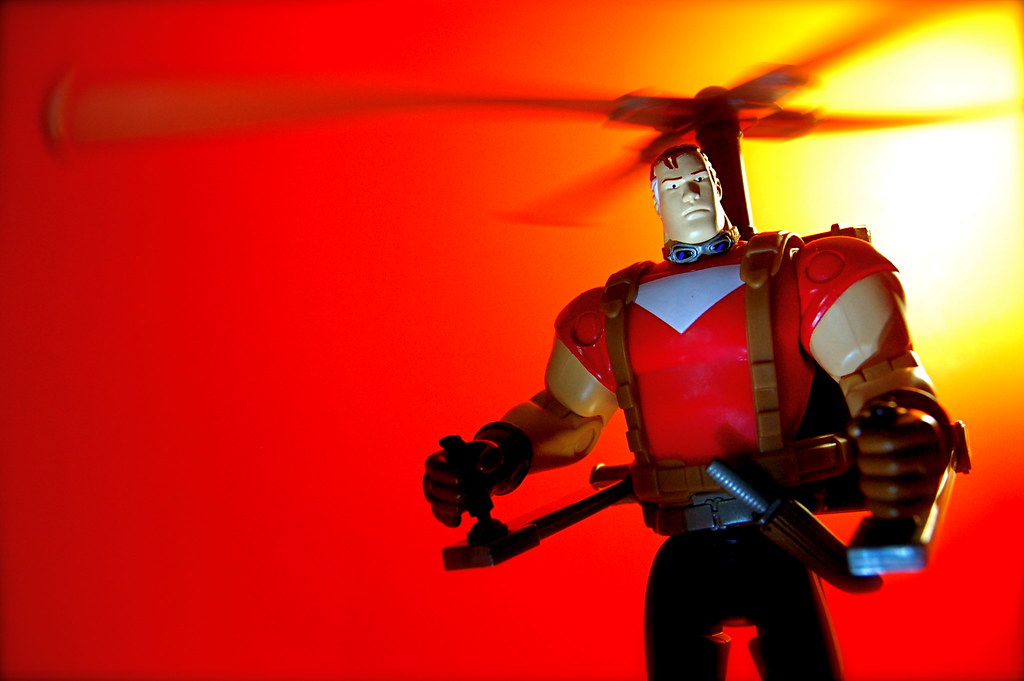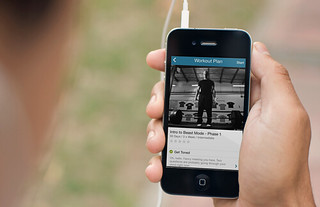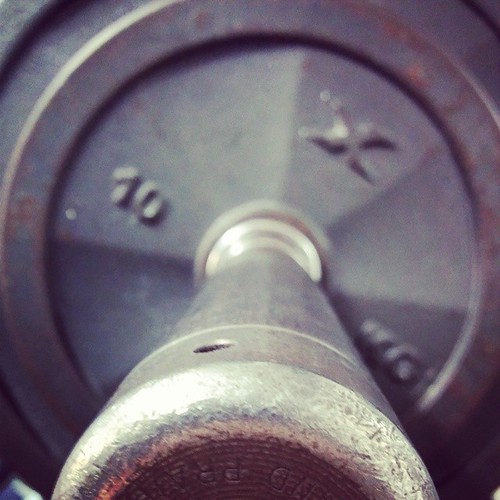Note From TG: Today I have a treat for everyone: a guest post from world renowned strength and conditioning coach, writer, and educator, Nick Tumminello.
Nick’s someone whom I have a lot of respect for, and someone who I feel is at the upper echelon of coaches who “get it.” He recently released an excellent resource, Core Training Facts & Fallacies and Top Techniques that I feel would be an excellent addition to any fitness professional’s library (or for anyone who likes to geek out to anatomy talk and debunking a lot of misconceptions in the industry).
Enjoy!
Gajda and Dominquez first used the term the “core” in their 1985 book Total Body Training to describe all of the muscles which compromises the center of the body. So, contrary to popular misconception, the core is not just your abs and lower back; the core is all of your torso muscles (shoulders, chest, glutes, abs, mid-back, lats, etc.) minus your extremities (arms and legs). (1)
Now that we’ve got that established, we can’t talk about using core training exercise applications that will likely transfer into improved core performance until we first establish what the trunk (i.e., core) muscles do in athletics (and in general function).
In addition to its respiratory function, the core musculature does two things:
1. The core functions to transfer force by limiting movement.
This is the one we hear about a lot: The function of the trunk musculature is to remain stiff in order to transfer force between the hips and the shoulders.
As an example, during a barbell push-press, both the legs are able to work with both the arms simultaneously to drive the weight up by transferring force through the trunk via the torso musculature remaining stiff and creating a stable platform, which allows the extremities to more effectively express force.
As another example, during sprinting, the torso musculature stiffens and limits the amount of torso rotation in order to effectively allow the hips to transfer force up and across the trunk (i.e., diagonally) to the opposing shoulder, and to allow the shoulder to transfer force down and across to the opposing hip.
In short, along with running and sprinting, many of our free weight and cable-based strength training exercise applications – from squats and deadlifts to pressing and pulling movements – involve torso stiffness where your core muscles are primarily functioning to transfer force between the extremities.
This reason is why we use a variety of anti-rotation, anti-extension and anti-lateral flexion exercise applications: to potentially improve the ability of the core muscles to remain stiff and more effectively transfer force during a variety of movements.
2. The core functions to produce force by creating movement <–This is the most neglected aspect of core function in sports performance training.
What we just covered above can easily give us the false impression that our core musculature only has one kind of a passive role in performance: where the torso only functions as a stable platform that channels force between the hips to the shoulders vertically, horizontally and/or diagonally.
Hence the current emphasis the training and conditioning field has with “anti-movement” core training exercise applications.

However, the torso musculature doesn’t just transfer force, it also helps to produce force.
This reality is perfectly summarized by the researchers in a 2012 study published in the Journal of Strength & Conditioning Research, which stated:
“Core strength does have a significant effect on an athlete’s ability to create and transfer forces to the extremities” (2).
And, it’s this aspect of core muscle function that’s often ignored and neglected by strength coaches, fitness professional and athletes, which is why I’m highlighting here in this post.
Put simply, just by looking at athletes in action one cannot deny the obvious active, movement role in power production (i.e., force summation) the trunk has in sporting actions like throwing, golfing, batting, punching, etc.
As you can see in the images above, in the loading phase (before the exploding phase) of a baseball pitch, a soccer throw, swinging a golf club, and throwing a punch, there’s movement of the trunk, which creates eccentrically lengthening (in various planes of motion), so the torso musculature can actively contribute, along with the legs and arms, to produce power.
Power is the Summation of Your Levers
It’s often said that power comes from the summation of force. But it’s your levers (i.e., your joints, which are controlled by muscles and connective tissues) that produce the force. So, producing power is really about summating your levers in a coordinated and synchronized fashion to produce maximal force.
Keep in mind that your spine is one big series of levers – each segment is a small lever. With these realities in mind, you can appreciate the trunk’s contribution to power production in sporting actions like throwing a ball and swinging a golf club or tennis racquet.
You can also appreciate the active contribution the torso has in power production by trying this simple experiment:
First, perform an overhead soccer medicine ball throw (use a medicine ball that’s approx. 4-6lbs) in the normal fashion (as it’s performed in athletics) where you extend at your spine and hips a bit (I didn’t say go to end range) in order to allow your (anterior) torso musculature to eccentrically load. ]
Then, compare that to an anti-extension soccer style throw where you don’t allow your spine to move at all. You already know which of the two throws will be more powerful. Not to mention, which throw will feel more natural and athletic.
Check out this video to see this topic being discussed in real time:
It’s important to note that what we’re really talking about here is heavily related to the “Serape Effect,” which Logan and McKinney discussed in their 1970 book Anatomic Kinesiology (3).
So, although identifying the fact the torso doesn’t just transfer force and reduce force by limiting movement, but also helps to produce force by contributing to many foundational movements to athletics, is nothing new it’s one of the most ignored, and therefore neglected aspects of core training.
Improving Core Performance
Now that you understand both aspects of core function in athletics: to transfer force and to produce force, you know that you need to train both in order to maximize your strength and performance.
You can learn the exact exercises we use in our core training system to maximizing performance and improve core function in the Core Training: Facts, Fallacies & Top Techniques 3-part video series.
These videos give you a virtual front row seat to a closed-door workshop uncovering the myths and misconceptions around core training and teach you the Full Spectrum Core Training System.
Learn More Here

References:
- Dominguez, R, and Gadja, R. Total Body Training. New York, NY: Charles Scribner’s Sons; 7-12, 1982.
- J Strength Cond Res. 2012 Feb;26(2):373-80. Effect of core strength on the measure of power in the extremities. Shinkle J, Nesser TW, Demchak TJ, McMannus DM.
- Logan, G., and W. McKinney. The serape effect. In: Anatomic Kinesiology (3rd ed.). A. Lock- hart, ed. Dubuque, IA: Brown, 1970. pp. 287–302.




 Max is an author, coach, and owner of Ambition Athletics in Encinitas, CA. He also competes in a wide variety of sports ranging from Muay Thai and Jiu Jitsu to Scottish Highland Games.
Max is an author, coach, and owner of Ambition Athletics in Encinitas, CA. He also competes in a wide variety of sports ranging from Muay Thai and Jiu Jitsu to Scottish Highland Games.








 programs designed for building maximum strength but Block Periodization is the one they believe in and utilize themselves.
programs designed for building maximum strength but Block Periodization is the one they believe in and utilize themselves.



